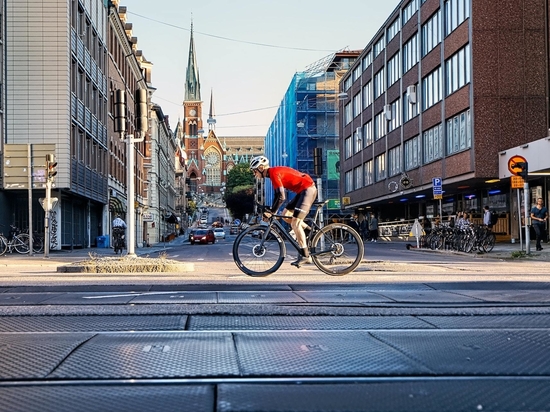
#Product Trends
Stainless Steel: The Ultimate Choice for Street Furniture Products
Learn why this material matters
In the realm of urban design and architecture, street furniture plays a pivotal role in shaping the character and functionality of public spaces. From park benches and litter bins to bike racks and bus shelters, these unassuming elements contribute significantly to the overall aesthetics, comfort, and usability of cities and communities. Among the array of materials available for crafting these essential urban components, stainless steel stands out as a remarkable choice, offering an impressive array of qualities that make it an ideal material for street furniture products.
Durability
Durability is a paramount consideration when selecting materials for street furniture, given the punishing exposure to weather conditions, heavy usage, and potential vandalism. Stainless steel is a clear winner in this regard. Renowned for its exceptional corrosion resistance, it can withstand the harshest elements – rain, snow, humidity, and even salt-laden coastal air – without succumbing to rust or decay. This longevity not only reduces maintenance costs but also ensures that the street furniture remains functional and visually appealing for years, making it a prudent investment for municipalities and urban planners.
Beyond durability, aesthetics play a crucial role in shaping the urban landscape. Stainless steel effortlessly meets this criterion with its sleek, modern, and timeless appearance. Its smooth surface and reflective properties add a touch of elegance to public spaces, effortlessly blending in with a variety of architectural styles. Whether placed in a historical district or a contemporary cityscape, stainless steel street furniture complements the surroundings while retaining its own distinct character.
Practicality
Practicality and functionality are key factors in determining the success of street furniture. Stainless steel excels in these areas as well. The material's innate strength allows for the creation of intricate designs and artistic forms without compromising on structural integrity. This versatility opens up creative possibilities for designers, enabling them to craft furniture that not only serves its utilitarian purpose but also becomes an artistic statement. Additionally, stainless steel's low thermal expansion and contraction rates ensure stability in varying temperatures, preventing warping or buckling that can compromise usability.
Maintaining a clean and hygienic urban environment is of paramount importance, and stainless steel's non-porous surface provides a valuable advantage. It resists the growth of bacteria, fungi, and other pathogens, making it an excellent choice for street furniture that comes into direct contact with the public. This quality is particularly crucial for surfaces like handrails, benches, and trash bins, promoting public health and safety.
Sustainability
In an era where sustainability is a global imperative, stainless steel aligns perfectly with eco-friendly goals. It is a fully recyclable material, minimizing its environmental impact. The ease of recycling stainless steel reduces the need for new raw materials and lessens energy consumption during production, making it a responsible choice for environmentally-conscious urban development. Furthermore, stainless steel's durability and resistance to wear and tear significantly extend the lifecycle of street furniture, reducing the frequency of replacements and conserving resources over time.
Maintenance
Maintaining street furniture is a practical challenge that cities must contend with. Stainless steel simplifies this task through its low-maintenance characteristics. Unlike materials that require frequent painting or coating to stave off corrosion, stainless steel's inherent resistance to rust eliminates the need for such labor-intensive upkeep. Routine cleaning with mild detergents and occasional polishing are sufficient to keep stainless steel street furniture looking pristine, saving time and resources in the long run.
In conclusion, stainless steel stands as a true champion among materials for street furniture products. Its exceptional durability, timeless aesthetics, functional versatility, hygiene-promoting qualities, sustainability, safety attributes, and low-maintenance nature combine to make it an ideal choice for enhancing the urban landscape. As cities continue to evolve and develop, selecting stainless steel for street furniture is a wise decision that yields enduring benefits for both the community and the environment. By embracing stainless steel, urban planners, designers, and municipalities can create inviting and enduring public spaces that reflect the best of design, functionality, and responsible urban living.





